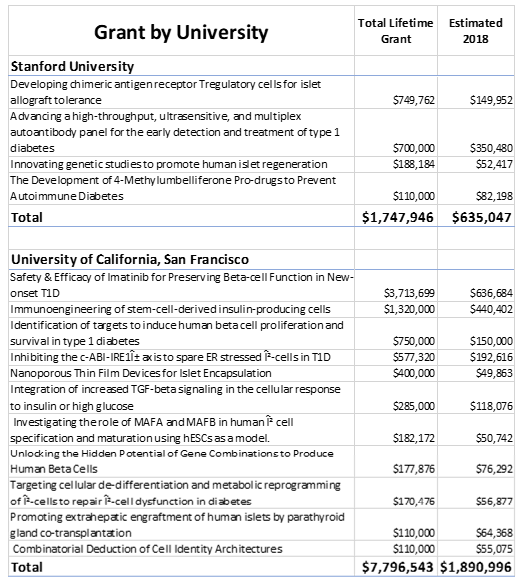On September 4th JDRF announced the launch of the JDRF Northern California Center of Excellence in partnership with Stanford and the University of California San Francisco (UCSF).
The center will “focus on delivering first-generation cures for T1D in areas with the potential for significant breakthroughs. Researchers will concentrate on the interaction of immune cells with insulin-producing beta cells; generating islets and immune cells from stem cells for next-generation therapies; and developing ways to transplant insulin-producing cells into people with T1D without requiring immunosuppression.”
It remains unclear where the actual physical location of the collaboration will take place, but the center will be co-led by the Director of Stanford’s Diabetes Research Center Seung Kim and Matthias Hebrok, Director Diabetes Center at UCSF. JDRF plans to fund the center for five years, with funding beyond year three confirmed after review.
JDCA Commentary
On net, this announcement is generally good news for all in the T1D community interested in a T1D Practical Cure. The four main takeaways are:
1. The Inspiration for the New Center Appears to Stem from JDRF’s Success Developing the AP
Over the past 20 years and leading up to its approval, JDRF awarded grants with the stipulation that any participating research organizations agreed to share research advances, insights, and intellectual property. Consequently, JDRF was able to provide the T1D community with unique value by fostering collaboration across multiple universities, which helped to advance trials through FDA testing to market approval.
2. The Center will Conduct PC-related Research
The mandate for the center targets research progress on Practical Cure-related pathways which focus on the development of a sustainable insulin-producing cell-supply and halting the T1D autoimmune attack without immunosuppression.
3. Stanford and UCSF Both Have Experience Conducting PC-Related Research
Stanford and UCSF have a history investigating, and are currently conducting, Practical Cure-related research, although most JDRF-funded projects are at a bench level. In 2018, JDRF funded four Stanford research projects with a total estimated 2018 budget of $600k. Project research focus included prevention, immune-system modification, and islet transplantation. At UCSF, JDRF funded 11 projects with a total estimated budget of $1.9m. Project focus included prevention, immunology, beta-cell function, and islet cell transplantation. For a full list of projects please see Appendix A.
4. UCSF is Currently Conducting a Practical Cure Project in Human Trials
Although most of the current JDRF-funded Stanford and UCSF projects are early stage, UCSF is conducting a project in Phase I human trials that has the potential to be a Practical Cure. The project is working to improve beta-cell mass by increasing Tregs and halting the T1D autoimmune response. There are no results to date.
The JDCA is hopeful that this new collaboration will accelerate this project through to the next stages of human trials and will attract many high-quality projects into human trial in the near future, but it is unclear whether the collaboration will build upon their current bench level research or try and improve upon research which is already being tested in human trials.
Appendix A: Stanford and UCSF 2018 JDRF Funded Research Projects

